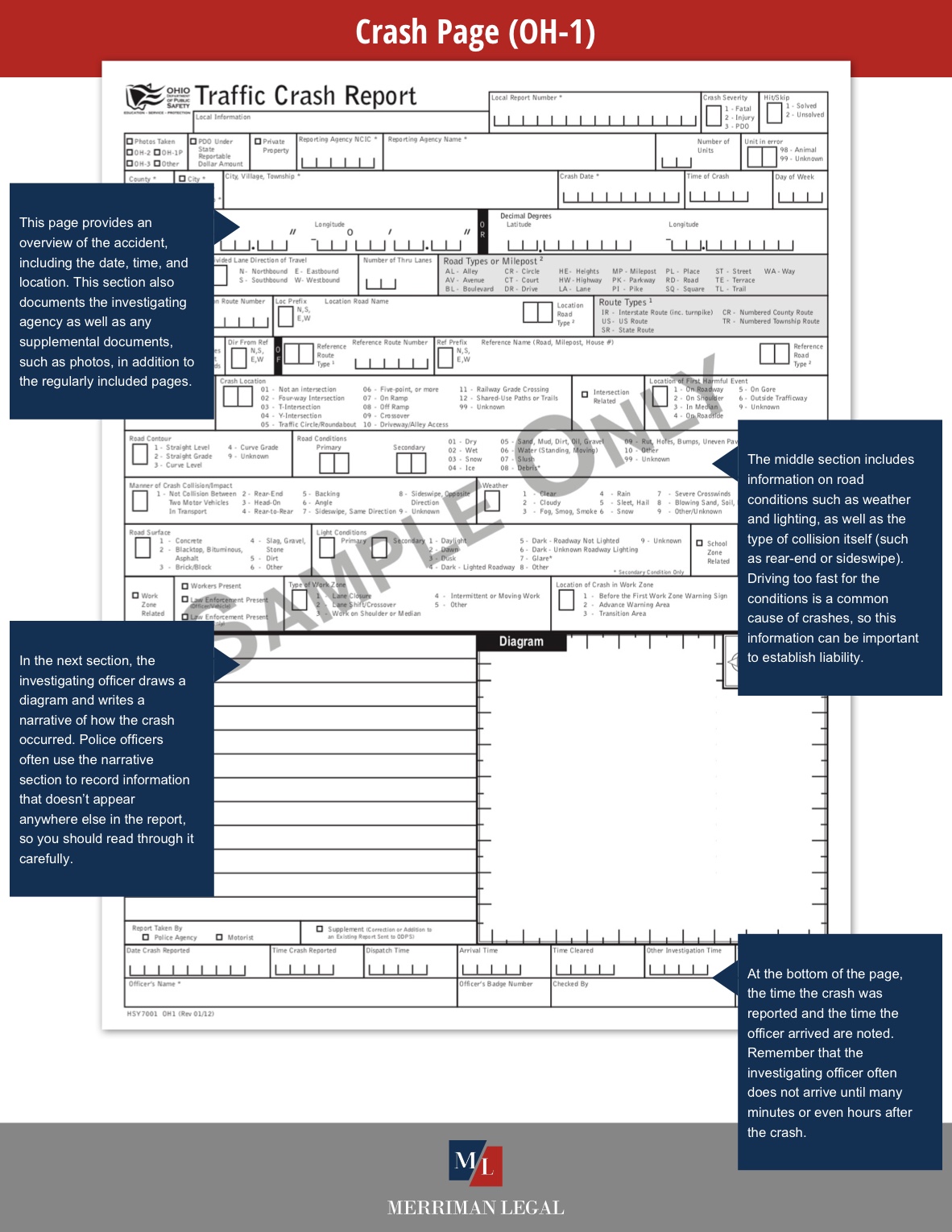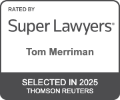Ohio Car Accident Report
Our law firm explains this critical piece of evidence
Understanding your Ohio Public Safety Traffic Crash Report for your car accident can be confusing. However, it’s critical to understand your accident report and make sure it’s accurate because insurance companies will use it to determine compensation for your accident. If you were in a truck accident, the trucking company will likewise look at the accident report as part of their response to the accident. Moreover, if the investigating officer is called to testify in a deposition or at trial, their testimony will most likely be based on the report.
Learn more about your accident report with our page-by-page guide below – and make sure you contact our law firm to discuss your accident in detail. You can also click here to download a printable PDF version. Contact Merriman Legal, LLC, and schedule a no cost consultation with our law firm. Call (216) 522-9000.
Crash Page (OH-1)
This page provides an overview of the accident, including the date, time, and location. This section also documents the investigating agency as well as any supplemental documents, such as photos, in addition to the regularly included pages.
The middle section includes information on road conditions such as weather and lighting, as well as the type of collision itself (such as rear-end or sideswipe). Driving too fast for the conditions is a common cause of crashes, so this information can be important to establish liability.
In the next section, the investigating officer draws a diagram and writes a narrative of how the crash occurred. Police officers often use the narrative section to record information that doesn’t appear anywhere else in the report, so you should read through it carefully.
At the bottom of the page, the time the crash was reported and the time the officer arrived are noted. Remember that the investigating officer often does not arrive until many minutes or even hours after the crash.

Unit Page (OH-1U)
A traffic unit or simply unit is a single road user (whether a vehicle or a non-motorist such as a pedestrian) involved in the crash. One copy of this page will be used for each vehicle or non-motorist involved.
The first section records the name and contact information of the vehicle owner (not necessarily the driver) as well as the year, make, model, and other identifying information for the vehicle itself. Insurance information is also recorded here.
In the top right, the report documents the location and extent of vehicle damage. In addition to property damage claims, this can affect injury claims when matched with seating information (for instance, if the passenger side was damaged, someone seated on that side may have also been hurt).
The bottom half of this page describes the unit’s role in the crash: what it was doing beforehand, what happened during the collision itself, and what contributing circumstances involving this vehicle may have led to the crash. The information in this section can be critical to establishing fault for the accident.

Motorist/Non-Motorist/Occupant Page (OH-1M)
This page documents people involved in the crash – the unit number listed for each person corresponds to a Unit Page. Additional copies will be used if there were more than two vehicles or non-motorist road users involved.
Each Motorist/Non-Motorist block describes a driver or other road user (like a cyclist or pedestrian) involved in the crash. Included in this section are contact information, seating position, safety equipment information (such as seatbelts and airbags), and any known injuries, as well as drug or alcohol tests and any citations charged.
Codes used in both the motorist/non-motorist and occupant blocks are explained here.
Additional occupants (passengers) are documented in Occupant blocks, each with contact information, seating position, and injury information. If there were more than two passengers involved, an Occupant/Witness Addendum with the same information is used.

Click here to download a printable PDF.



